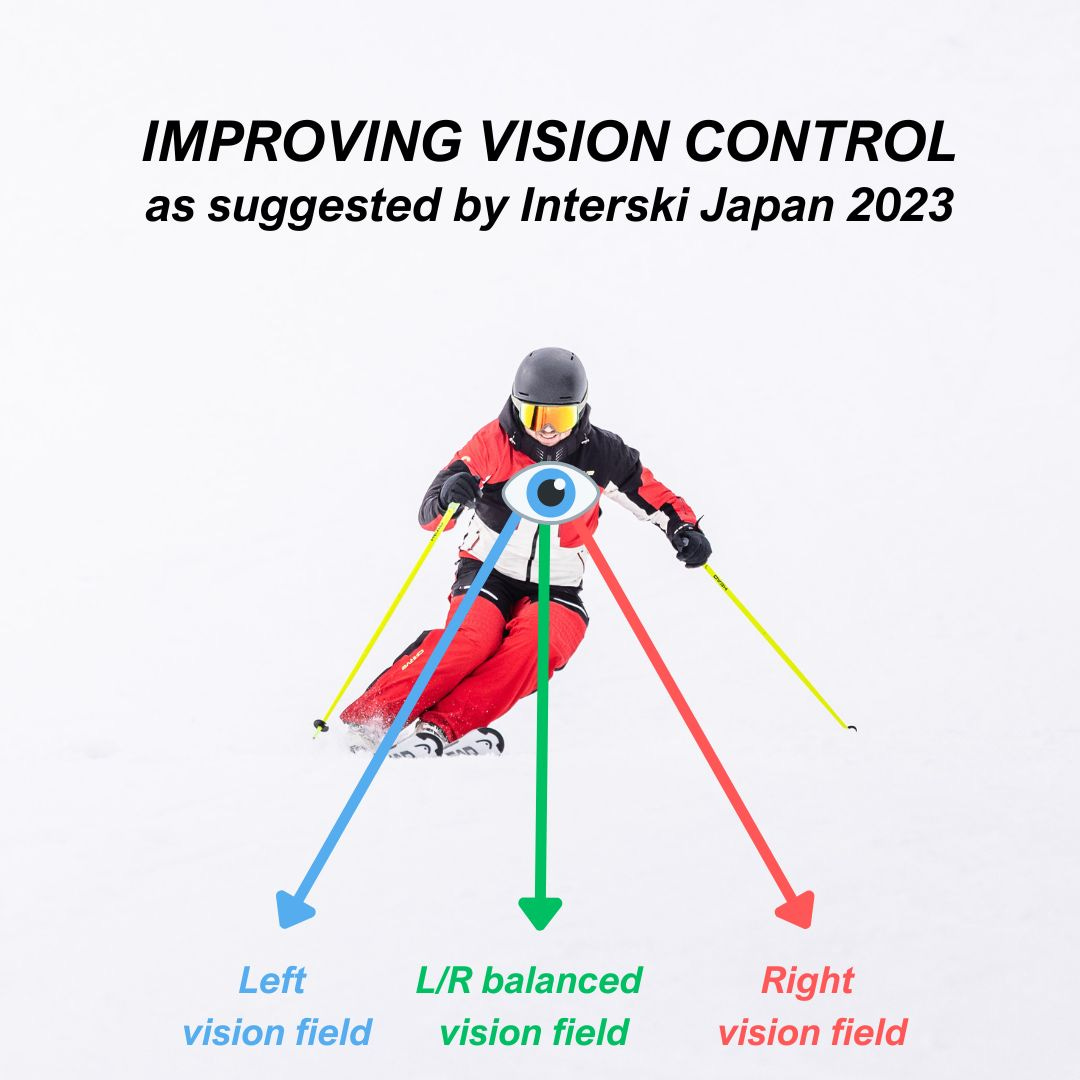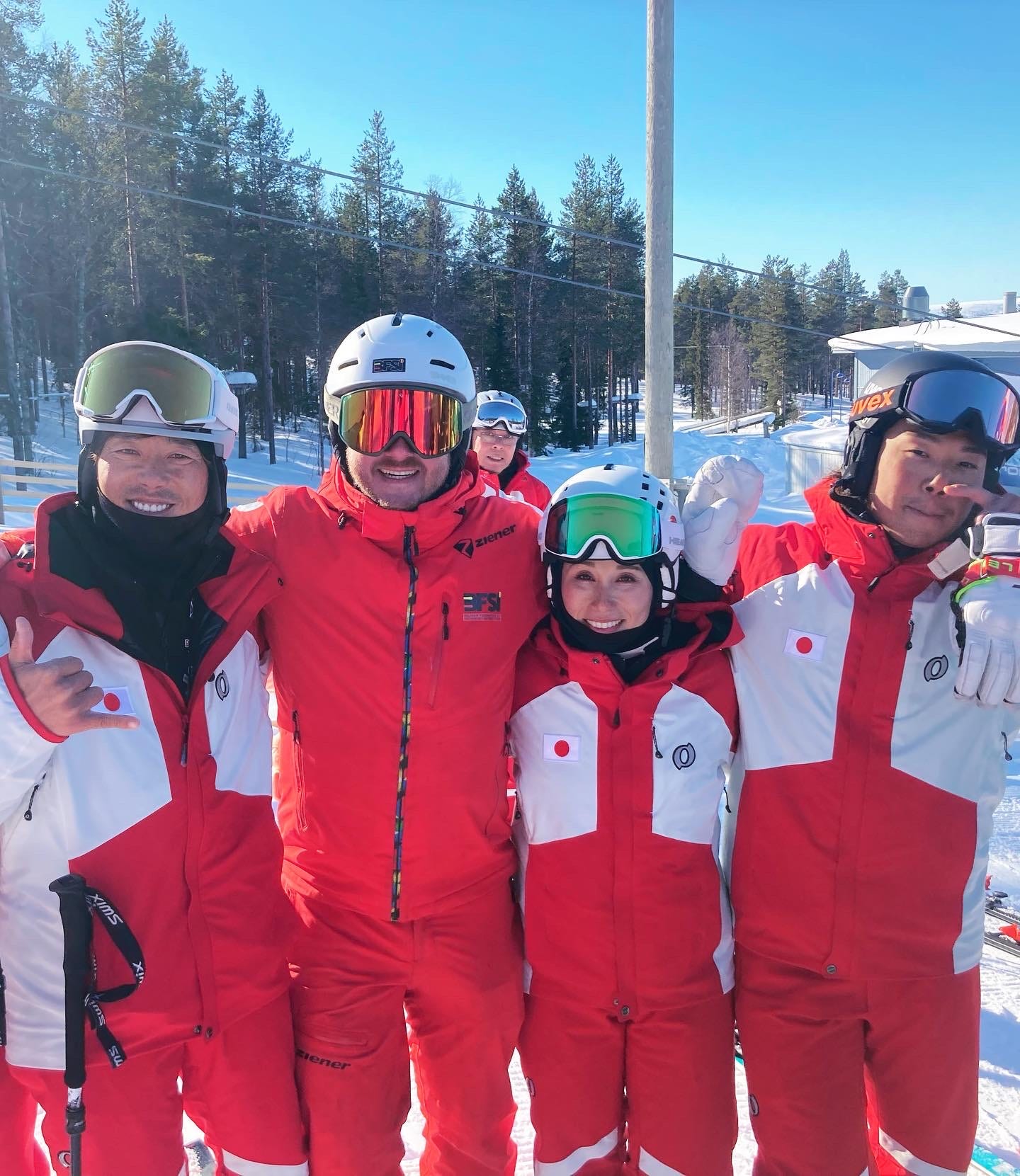Are you using the wrong eye? Interski 2023 discussion about Japan's skiing secret
Learn how a balanced vision field can make or break your skiing…
As ski fanatics, we all know that the sport requires a lot of technical skill and physical fitness. But have you ever considered the role that your eyes play in skiing?
I recently attended an interesting clinic at Interski 2023 in Levi by the Japanese Interski team, where we explored the concept of ocular dominance and how to apply it in ski training.
This exceptional clinic was organised by the Japan Interski committee, which was represented at Interski 2023 by two organisations: the SAJ (Ski Association of Japan) and the Professional Ski Instructors association of Japan.
Being awarded the technical prize by the SAJ after a couple of seasons of training in Japan, I was already pretty acquainted with their curriculum.
But I was still very eager to learn about any novel perspectives they could provide on the significance of our eyes in Alpine skiing.
I adore Japan and their skiing culture, so I was pretty confident this clinic would be a treat.
Spoiler alert: it was pretty damn cool!
Team Japan at the start of their Interski 2023 technical clinic.
What is ocular dominance?
For those who are unfamiliar with the term, ocular dominance refers to the fact that one eye typically has better vision than the other. This is due to differences in the neural pathways that transmit visual information to the brain. While most people have a dominant eye, some individuals have equal vision in both eyes.
Research in the field of neuroscience has identified several ways to measure ocular dominance, including the hole-in-the-card test, the Porta test, and the Miles test.
These tests involve blocking or manipulating the visual input to one eye and observing which eye takes over and responds more strongly.
Research has demonstrated that ocular dominance is not rigid and can be influenced by different factors, including age, experience, and training. For instance, specific types of visual training have been found to enhance binocular vision and minimize differences in visual acuity between the eyes.
Overall, the scientific understanding of ocular dominance continues to evolve, and further research is needed to fully understand the underlying mechanisms and potential applications of this phenomenon.
Most people have one dominant eye due to variances in neural pathways.
Vision control
So, how does ocular dominance relate to skiing? Well, it turns out that having a dominant eye can affect your balance and spatial awareness on the slopes. The Japanese team shared with us a few tips on how to use this knowledge to improve our skiing technique.
Firstly, they recommended that we determine our dominant eye. This can be done through a simple test where you hold out one hand in front of you, with your palm facing away, and then point at an object in the distance. Close one eye and then the other. Whichever eye remains focused on your finger and the object is your dominant eye.
Once you know your dominant eye, you can use this information to improve your skiing:
Skiers with a dominant left eye primarily perceive the left side of their field of vision. Consequently, their body inclination tends to shift towards the left.
On the other hand, skiers with a dominant right eye predominantly perceive the right side of their visual field, leading them to incline more towards the right.
The idea is that we should strengthen our weaker eye and learn to ski with two eyes instead of one strong dominant eye, thus balancing both fields of vision.
The end result is what the Japanese called a left/right balanced vision field. By striving for a balanced vision field, you indirectly work on correcting your posture and weight distribution to maintain a balanced stance throughout each turn.
Using your non-dominant eye to lead a new turn may feel counterintuitive at first, but it can actually help you to anticipate and react to changes in terrain more quickly.
Are you enjoying my newsletter so far?
🍺 Please consider buying me a beer:
deposit some money at BE 63 0013 0885 0908
BIC: GEBABEBB
Time to practice!
To facilitate the practical implementation of balancing the vision field, the Japanese introduced a method involving a small piece of fabric for each participant during the clinic.
This fabric had one side coloured blue and the other side coloured red. We were instructed to position this fabric between our eyes within our ski goggles, with the blue side pointed towards the left and the red side pointed towards the right.
Subsequently, we received instructions to execute sweeping turns on a spacious, expansive slope. The Japanese demonstrators explained that we should pay attention to these things during our runs:
During right turns, our focus needed to be directed towards the blue side of the fabric by using only our left eye.
Conversely, during turns towards the left, we were advised to maintain our gaze primarily on the red side by using merely our right eye.
Although this drill presented a serious challenge, I soon grasped the purpose behind their approach, and it proved to be a valuable exercise for cultivating a balanced vision field. What was also nice was that afterwards, we were allowed to keep this piece of fabric too, as a souvenir of the clinic.
In addition to the practical drills, I had the opportunity to get to know some Japanese demonstrators a bit better. This gave me the chance to ski a run alongside Yusa Yusanchu, a prominent champion in the Japanese ski technical championships and an exceptional skier.
Witnessing the unparalleled speed and precision with which she carved down the slopes was truly remarkable, and it was an exhilarating experience trying to keep up with her every move.
“Keep that smile going!” the Japanese demonstrators cheerfully repeated throughout the clinic. And without a doubt, this entire experience was filled with contagious smiles. It was an absolute blast! So much joy and fun!
Arigato gozaimasu, team Japan! 🙏
Conclusion
Overall, my experience with the Japanese team at the Interski 2023 clinic was a perfect blend of education and enjoyment.
It was captivating to understand the influence our eyes have on skiing technique and to uncover strategies to enhance our abilities on the slopes using this knowledge.
Therefore, when you embark on your next mountain adventure, why not give these tips a try and observe the remarkable impact they can have on your skiing?
You might be pleasantly surprised by the outcomes they yield.
Keep that smile going! 😄
Did you enjoy this newsletter?
🍺 Please consider buying me a beer:
deposit some money at BE 63 0013 0885 0908
BIC: GEBABEBB










Insightful...sharing this!